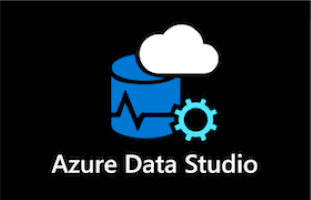Data analytics has become an integral part of decision-making, and Azure Data Studio continues to lead the charge in simplifying the data analytics workflow. As an evolving cross-platform data management and development tool, Azure Data Studio empowers users to seamlessly connect with various cloud and on-premises databases. In this article, we’ll dive into the recent updates that have enriched Azure Data Studio, enhancing its capabilities for data analytics professionals.
System Versioning: Tracking Data Changes
A standout among the recent enhancements to Azure Data Studio is the introduction of system versioning. This innovative feature allows users to delve into the historical changes within their tables, enabling the tracking and analysis of data transformations. With the support of temporal queries, users can navigate the current and historical data effortlessly.
To utilize system versioning, users can enable it through the System Versioning wizard, accessed by right-clicking on a table in the Servers view and selecting “Manage System Versioning.” By following the wizard’s prompts, users can define history tables, establish period columns, and activate system versioning for their main table.
The Temporal History view empowers users to explore the historical changes, showcasing the evolution of data over time. With the ability to filter the history and analyze trends, system versioning becomes a valuable asset for data analytics, enabling time-based analysis, data recovery, and comparative evaluations.
https://synapsefabric.com/2023/09/22/aws-athena-vs-quicksight-choosing-the-right-analytics-tools/
Graph Tables: Analyzing Complex Relationships
Another exciting addition to Azure Data Studio is the incorporation of graph tables. This feature caters to users dealing with intricate relationships within their data. Graph tables offer a powerful solution to model and query complex relationships, paving the way for the identification of patterns, hierarchies, and connections.
Creating graph tables is made simple through the Graph Table wizard, accessible by right-clicking on a database in the Servers view and selecting “New Graph Table.” This wizard guides users through the process of establishing node and edge tables, thus facilitating the representation of entities and relationships.
By leveraging graph tables, users can employ standard SQL queries to traverse and analyze relationships, which proves invaluable for applications like social networks, recommendation systems, and fraud detection.
Memory-Optimized Tables: Boosting Performance
The inclusion of memory-optimized tables in Azure Data Studio brings forth a significant performance enhancement. Designed to elevate database scalability and efficiency, memory-optimized tables store data entirely in memory, leading to faster transactions and queries. This feature caters to high-volume, low-latency workloads, making it an asset for real-time analytics, IoT applications, and financial trading.
Creating memory-optimized tables is a breeze using the Memory-Optimized Table wizard. By right-clicking on a database in the Servers view and selecting “New Memory-Optimized Table,” users can follow the wizard’s steps to create tables that exploit memory storage and optimistic concurrency control.
The addition of memory-optimized tables marks a leap forward in handling data-intensive workloads with speed and efficiency, ultimately enhancing the data analytics experience.
Azure Data Studio continues to evolve as a robust and versatile data analytics tool. The recent enhancements discussed in this article – system versioning, graph tables, and memory-optimized tables – underscore Azure Data Studio’s commitment to providing users with cutting-edge features that streamline data analytics workflows, empower analysis of complex relationships, and boost overall database performance. As data analytics remains an essential component of modern decision-making, Azure Data Studio stands tall as an invaluable tool for professionals in the field.






